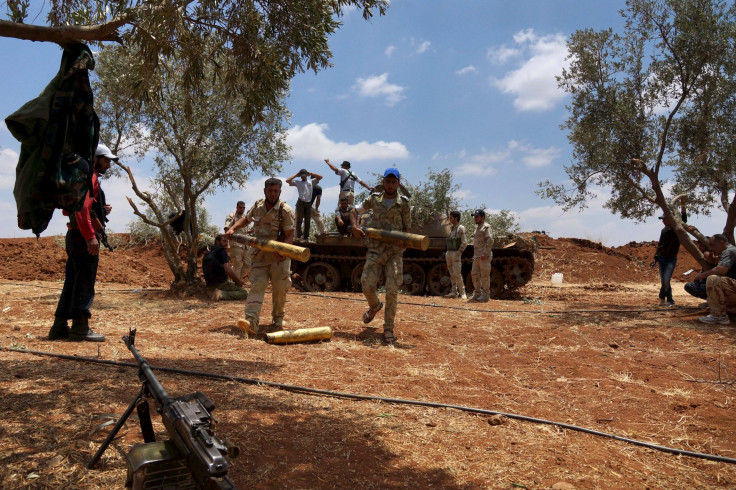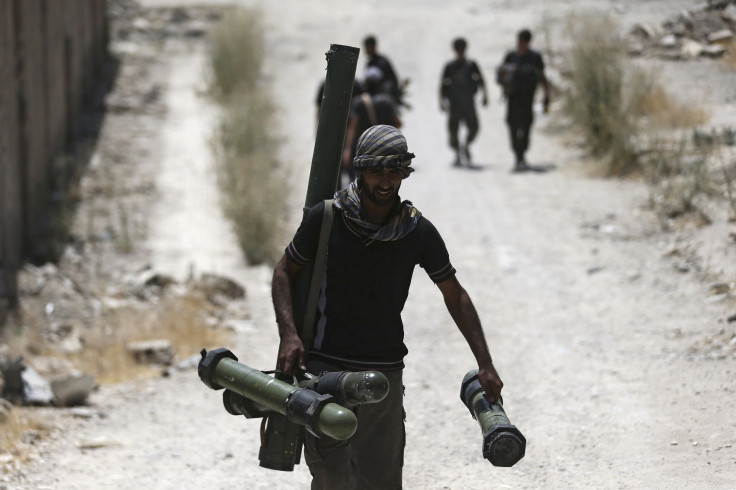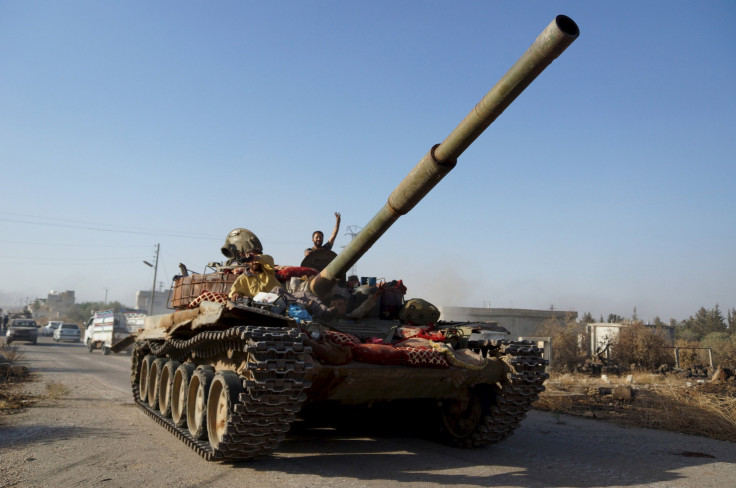US Plan To Provide Air Cover For Syrian Rebels Allows For Targeting Al Nusra Battalions, Regime Forces

The new U.S. plan to support vetted moderate rebels in the northern part in Syria allows for American planes to target not only the Islamic State group, but any group that targets the trainees, including President Bashar Assad’s forces and al-Qaeda’s Jabhat al Nusra. U.S. officials said Monday that they alerted the Syrian government of their plan and downplayed any future confrontation with the regime. The more immediate concern for the U.S. appears to be Al Nusra, the rebel group that kidnapped several U.S.-vetted rebels last week.
"These forces are being provided with a wide range of coalition support in their mission to counter ISIL,” Pentagon spokesman Navy Capt. Jeff Davis said Monday in a news briefing. "This does include defensive fire support to protect them."
Monday marked the first time the U.S. publicly announced its intention to attack any group that threatened the moderate rebels it has trained and armed, signaling that the U.S. military forces flying over northern Syria may be in for a far larger battle in the country than they had originally intended.

Last week Turkey and the U.S. announced the formation of a “safe zone” that will require Turkish and American air forces to bomb Islamic State group militants in order to rout them from their posts along the border. A select group of Syrian rebels will monitor the situation on the ground, preventing the Islamic State group from returning, under the buffer-zone plan. Syrian rebel fighters are to clear a 60-mile strip of land along the border to create a haven for Syrian refugees, who have flooded Turkey's borders during the four-year civil war. The rebels are supposed to get regular shipments of ammunition and heavy weaponry.
The plan, though not fully implemented, is off to a rough start.
Al Nusra claimed responsibility for the kidnapping of U.S.-vetted moderate rebels last week.
A statement released by the U.S.-backed moderate opposition group accused Jabhat al-Nusra of abducting group leader Nadim al-Hassan and a number of his companions. The Syrian Observatory for Human Rights, a British group that reports on the conflict, said the men were abducted while returning from a meeting to coordinate efforts with other factions.
Following the kidnapping, the U.S. engaged in airstrikes that targeted the extremist group, marking the first time since the Syrian civil war began that the U.S. protected the moderate rebels militarily.
But the scuffle with Al Nusra is an indication that the U.S. may have a more difficult time gaining the upper hand in the battle in northern Syria.
At several points over the last six months, factions of the Al Nusra group have indicated that they were willing to work with the moderate opposition, especially the group known as Jaysh al-Fatah. The more moderate rebel groups and Al Nusra worked together in Idlib to defeat regime forces. The battlefield environment in Aleppo, however, is different.
In Aleppo, U.S. officials are still trying to grapple with delineating the “good rebels from the bad,” rebel fighters in Ahrar al Sham, one of the main opposition groups in the northern part of the country, told International Business Times Monday. So far, the U.S. has picked just 60 rebels that they are sure are committed to the offensive.
Just days after the U.S. and Turkey announced plans to create a safe zone in northern Syria, rebel groups in that part of the country began vying for a spot on the team that would oversee the mission securing the safe zone on the ground with newly shipped American weapons.
Rebel groups in Syria, especially in the north, are split in their allegiances to Turkey and the U.S., and finding a rebel force with a common ideology and strategy to carry out the monitoring of the buffer zone will be difficult, rebels told IBTimes. The weapons, they said, will end up falling into the hands of groups that have different ideologies and ultimate goals.
While many rebel leaders used to fall under one umbrella group, the Free Syrian Army, they have recently split and are now duking it out for land and power. There are the hardline Islamist fighters with known battlefield strength, but an extremist Muslim ideology. Then there's the more moderate groups known for their popularity among the people of Aleppo, who while still devoutly Muslim, do not want the implementation of Shariah law in the post-war era.

The rebels that receive the arms for securing the buffer zone will undergo no formal training and will not be bound to any official or binding agreement with the U.S. and Turkey. Rebels in Aleppo say that while they are willing to join the buffer zone monitoring force, they intend to use the weapons they receive from the U.S. and Turkey for their fight against Assad first and foremost, before the fight against ISIS.
© Copyright IBTimes 2024. All rights reserved.




















